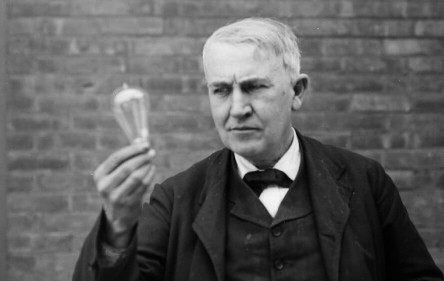There’s little irony that the man who forever disrupted our internal clocks wasn’t a fan of going to sleep. In 1922, Thomas Edison wrote in his diary:
“The man who sleeps eight or ten hours a night is never fully awake—he has only different degrees of doze throughout the twenty-four hours. We are always hearing people talk about “loss of sleep” as a calamity. They better call it loss of time, vitality and opportunity.”
Edison went as far as inventing the lightbulb to liberate us from the chains of nature’s light and dark cycles. His aversion towards “lost time,” is the reason we now have the power to decide when our days start and end with the flick of a switch.
Edison talked a big game about only needing “three to four hours” of sleep a night, but he was well aware of the imagination superhighway that begins at the brink of consciousness.
Hypnagogia, taken from the Greek words, “sleep” and “guide,” refers to the mysterious state that occurs at the crossroads being awake and falling asleep. It’s this initial phase of sleep where alpha and theta brain waves swirl, causing inspiration and imagination to collide.
It’s here—at the gates of slumber— where million dollar ideas are born and creative carrots are dangled just out of reach.
Edison being Edison, invented a trick for capturing the hypnagogic state by napping in a chair while holding a steel ball. The moment he’d fall asleep the ball would drop and wake him up. He could then return to his work in the semi-hallucinatory, hypnagogic state without any “lost time” or post-nap grogginess.
Salvador Dali also used these one second-micro-naps to ride the wave of heightened creativity, taking mid-day naps with a spoon in his hand.
It’s a clever idea: setting traps for subconscious brilliance with steel balls and silver spoons. But what this story really demonstrates is the necessity of sleep for the creative process.
While the brain and body need rest, the imagination needs to dance. And the muscles of creativity prefer a circadian tango when no one is watching.



